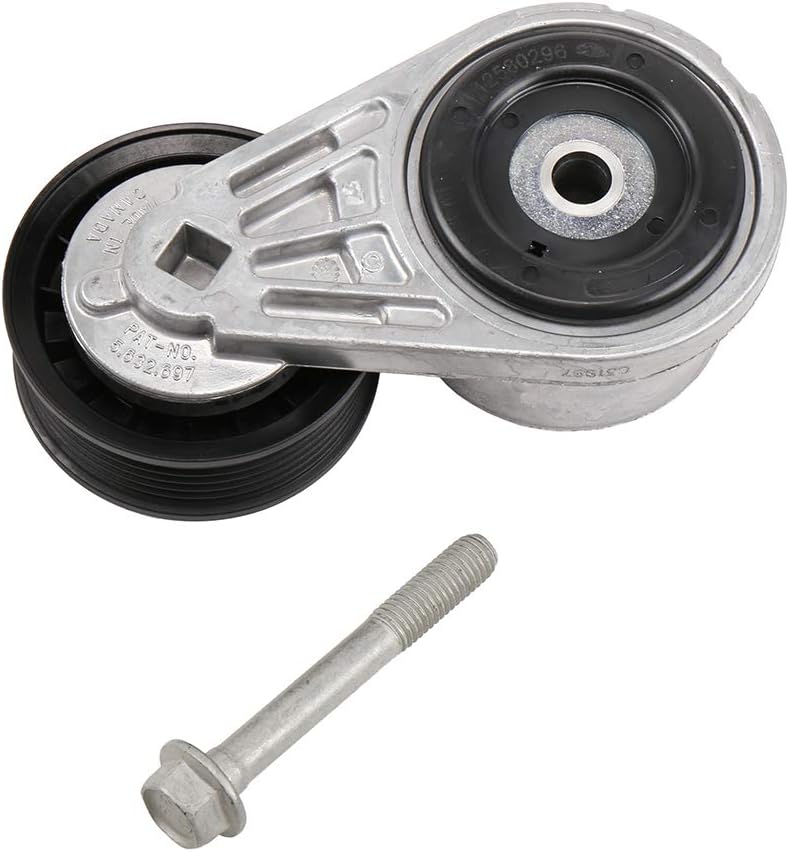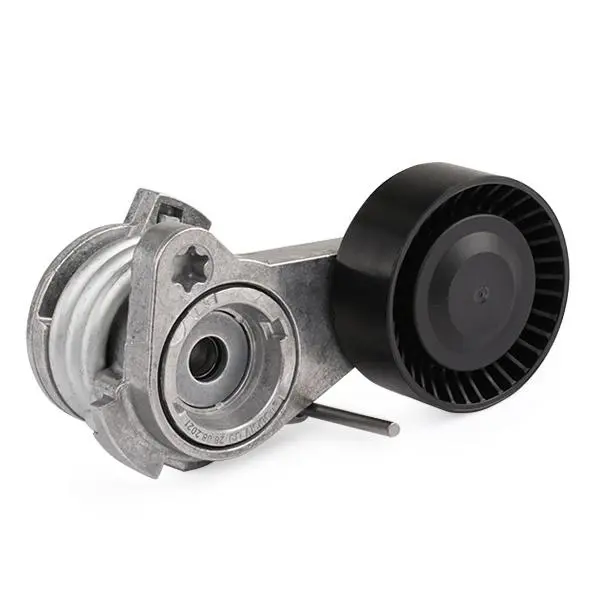Product Description
89449 D11862601 Belt Tensioner, v-ribbed belt
OEM:D11862601
REF NO.: 89449
Fits for DYNACRAFT
Product Parameters
|
OEM NO. |
89449 D11862601 |
| Application | DYNACRAFT |
|
Place of Origin |
ZHangZhoug, China |
|
Material |
Aluminium |
| Product Name | Belt tensioner |
|
Reference NO. |
|
|
Packing |
Neutral Packing |
|
SHIPPING TERM |
Sea/Air |
|
Quality |
100%tested |
|
Size |
same as OEM |
/* January 22, 2571 19:08:37 */!function(){function s(e,r){var a,o={};try{e&&e.split(“,”).forEach(function(e,t){e&&(a=e.match(/(.*?):(.*)$/))&&1
| Certification: | ISO9001, TS16949 |
|---|---|
| Standard Component: | Standard Component |
| Technics: | Casting |
| Samples: |
US$ 30/Piece
1 Piece(Min.Order) | Order Sample |
|---|
| Customization: |
Available
| Customized Request |
|---|
.shipping-cost-tm .tm-status-off{background: none;padding:0;color: #1470cc}
| Shipping Cost:
Estimated freight per unit. |
about shipping cost and estimated delivery time. |
|---|
| Payment Method: |
|
|---|---|
|
Initial Payment Full Payment |
| Currency: | US$ |
|---|
| Return&refunds: | You can apply for a refund up to 30 days after receipt of the products. |
|---|

Can you provide guidance on selecting and sizing drive belt tensioners for specific applications?
When selecting and sizing drive belt tensioners for specific applications, several factors need to be considered to ensure optimal performance and reliability. Here’s a detailed guidance on selecting and sizing drive belt tensioners:
- Identify the Application Requirements:
- Consult Manufacturer Specifications:
- Consider Tensioner Design and Mounting:
- Calculate Tension and Load Requirements:
- Consider Additional Features and Maintenance:
- Consult with Experts:
Start by identifying the specific requirements of the application. Consider factors such as the type of system being driven by the belt (e.g., alternator, water pump, power steering), the power transmission requirements, the belt width and length, and the operating conditions (e.g., temperature, environment). Understanding these requirements will help determine the appropriate tensioner design, load capacity, and additional features needed for the application.
Refer to the manufacturer’s specifications and guidelines for the tensioner. Manufacturers typically provide detailed information about the tensioner’s load capacity, belt compatibility, and other relevant technical details. It’s important to ensure that the selected tensioner is compatible with the specific belt type, size, and pulley configuration of the application. Manufacturers may also offer application-specific recommendations or provide technical support to assist with the selection process.
Evaluate the tensioner design and mounting options based on the application’s space constraints, belt path, and alignment requirements. Tensioners are available in various designs such as spring-loaded tensioners, hydraulic tensioners, or automatic tensioners. Consider the advantages and limitations of each design and choose the one that best suits the application’s needs. Additionally, assess the mounting options and ensure that the tensioner can be easily installed and aligned within the system.
Calculate the required tension and load for the drive belt system. The tension should be within the belt manufacturer’s recommended range to prevent slippage or excessive wear. Consider the power requirements of the driven components and the expected operating conditions. If necessary, consult engineering references or software tools that provide tension calculations based on the belt type, pulley size, and power transmission requirements. Ensure that the selected tensioner can handle the calculated tension and load without compromising its performance.
Evaluate any additional features or maintenance requirements that may be beneficial for the application. Some tensioners offer adjustable arms or pulleys, which allow fine-tuning of the belt tension. Others may have built-in dampers to reduce vibrations or diagnostic capabilities for monitoring belt condition. Consider these features based on the application’s specific needs and their potential to enhance performance, reliability, and ease of maintenance.
If you’re unsure about the selection and sizing process, consider consulting with experts or engineers experienced in belt-driven systems. They can provide valuable insights, recommend suitable tensioner options, and ensure that the selected tensioner meets the application’s requirements. Additionally, they can assist with belt tension calculations, system design considerations, and troubleshooting potential issues.
In summary, selecting and sizing drive belt tensioners for specific applications requires a systematic approach. By identifying the application requirements, consulting manufacturer specifications, considering tensioner design and mounting, calculating tension and load requirements, and evaluating additional features and maintenance needs, you can make an informed decision. Consulting with experts can also provide valuable assistance throughout the selection process. Properly selected and sized tensioners will contribute to the overall efficiency, reliability, and longevity of the belt-driven system.

Can drive belt tensioners be customized or modified to suit specific automotive or industrial needs?
Drive belt tensioners can be customized or modified to suit specific automotive or industrial needs. Manufacturers of tensioners offer various options and configurations to accommodate different applications and requirements. Here’s a detailed explanation of how drive belt tensioners can be customized or modified:
- Tensioner Design:
- Tensioner Size and Mounting:
- Tensioner Load Capacity:
- Additional Features:
Drive belt tensioners come in different designs to meet specific needs. Manufacturers offer a range of tensioner designs, such as spring-loaded tensioners, hydraulic tensioners, and automatic tensioners. These designs can be customized based on the specific requirements of the automotive or industrial application. For example, some applications may require tensioners with higher load-bearing capacity or increased resistance to environmental factors like dust, moisture, or extreme temperatures. Manufacturers can modify the tensioner design to incorporate features that enhance durability, performance, and reliability in these challenging conditions.
Drive belt tensioners are available in various sizes to accommodate different belt widths and pulley configurations. Manufacturers provide tensioners in different dimensions, allowing customization based on the specific dimensions of the belt and pulley system. Additionally, tensioners can be modified to suit different mounting requirements. Some applications may require tensioners with specific mounting brackets or orientations to fit within the available space or align with other components. Manufacturers can customize the tensioner’s size, shape, and mounting features to ensure compatibility and ease of installation in the target application.
The load capacity of a drive belt tensioner is an essential consideration for certain applications. Industrial or heavy-duty automotive applications may require tensioners with higher load capacity to withstand increased belt tensions or accommodate larger belt-driven systems. Manufacturers can customize tensioners to meet these requirements by using stronger materials, incorporating reinforced components, or optimizing the tensioner’s internal structure to handle higher loads. By customizing the tensioner’s load capacity, it can reliably handle the specific demands of the application and ensure long-term performance.
Drive belt tensioners can be customized with additional features to enhance their functionality or address specific needs. For example, manufacturers may offer tensioners with built-in dampers to reduce vibrations or noise in certain applications. Some tensioners may have adjustable arms or pulleys to provide fine-tuning of the belt tension. Manufacturers can also customize tensioners to incorporate special coatings or materials that improve resistance to corrosion, abrasion, or other environmental factors. These additional features can be tailored to suit the specific automotive or industrial needs, providing enhanced performance and longevity.
In summary, drive belt tensioners can be customized or modified to suit specific automotive or industrial needs. Manufacturers offer various options for tensioner design, size, mounting, load capacity, and additional features. By customizing tensioners, they can be optimized to meet the requirements of different applications, ensuring compatibility, reliability, and enhanced performance. When selecting or modifying drive belt tensioners, it is essential to consider the specific needs of the application and consult with manufacturers or experts to determine the most suitable customization options.

Can you explain the importance of proper tensioning for drive belts in various machinery and vehicles?
Proper tensioning of drive belts is of utmost importance in various machinery and vehicles. Maintaining the right level of tension ensures optimal performance, longevity, and reliability of the belt drive system. Here’s a detailed explanation of the importance of proper tensioning for drive belts:
- Efficient Power Transmission:
- Preventing Belt Slippage:
- Reducing Wear and Fatigue:
- Optimizing Belt Life and Performance:
- Adapting to Load Variations:
- Enhancing System Reliability:
Proper tensioning is crucial for efficient power transmission in machinery and vehicles. When a drive belt is under-tensioned, it can slip on the pulleys, resulting in power loss and reduced performance. Insufficient tension leads to inadequate friction between the belt and the pulleys, compromising the transfer of power from the driving pulley to the driven pulley. By maintaining the correct tension, drive belts remain properly engaged with the pulleys, ensuring maximum power transfer and efficient operation of the machinery or vehicle.
Correct tensioning helps prevent belt slippage, which is a common issue in belt drive systems. Slippage occurs when the belt loses its grip on the pulleys, leading to power loss, decreased efficiency, and potential damage to the belt and pulleys. Proper tension ensures that the belt remains securely in place, creating sufficient friction to prevent slippage even under high loads or sudden changes in speed or torque. By preventing belt slippage, proper tensioning maintains reliable power transmission and protects the integrity of the belt drive system.
Improper tensioning can cause excessive wear and fatigue on drive belts. If a belt is over-tensioned, it experiences increased stress, leading to accelerated wear and potential premature failure. On the other hand, under-tensioning can cause the belt to flex excessively, leading to fatigue and eventual belt failure. By maintaining the correct tension, drive belts operate within their design limits, minimizing wear and fatigue. Proper tensioning extends the lifespan of the belts, reducing maintenance costs and downtime associated with belt replacements.
Proper tensioning plays a vital role in optimizing the life and performance of drive belts. When belts are correctly tensioned, they operate in their intended range, minimizing stress and strain. This optimal operating condition reduces the risk of belt damage, such as cracking, stretching, or delamination. Additionally, proper tensioning ensures that the belts track properly on the pulleys, preventing misalignment and excessive side loads. By optimizing belt life and performance, proper tensioning contributes to increased reliability, reduced maintenance, and improved overall efficiency of machinery and vehicles.
Drive belts in machinery and vehicles often experience load variations during operation. Proper tensioning allows the belts to adapt to these load changes effectively. When the load increases, the tensioner compensates by applying additional tension to prevent slippage. Conversely, when the load decreases, the tensioner releases some tension to avoid excessive stress on the belt and pulleys. This adaptability ensures that the belts maintain the optimal tension regardless of the varying load conditions, allowing for consistent power transmission and reliable performance.
The proper tensioning of drive belts enhances the overall reliability of machinery and vehicles. By maintaining optimal tension, belts operate within their designed parameters, reducing the risk of unexpected belt failure and associated downtime. Reliable power transmission ensures that machinery operates as intended, minimizing the chances of equipment damage, production delays, and costly repairs. The use of proper tensioning techniques adds a layer of control and stability to the belt drive system, enhancing its overall reliability and ensuring smooth operation.
In summary, proper tensioning of drive belts is essential for efficient power transmission, preventing belt slippage, reducing wear and fatigue, optimizing belt life and performance, adapting to load variations, and enhancing system reliability in various machinery and vehicles. By maintaining the correct tension, drive belts operate effectively, ensuring reliable performance, extended lifespan, and minimized downtime.


editor by CX 2024-05-14